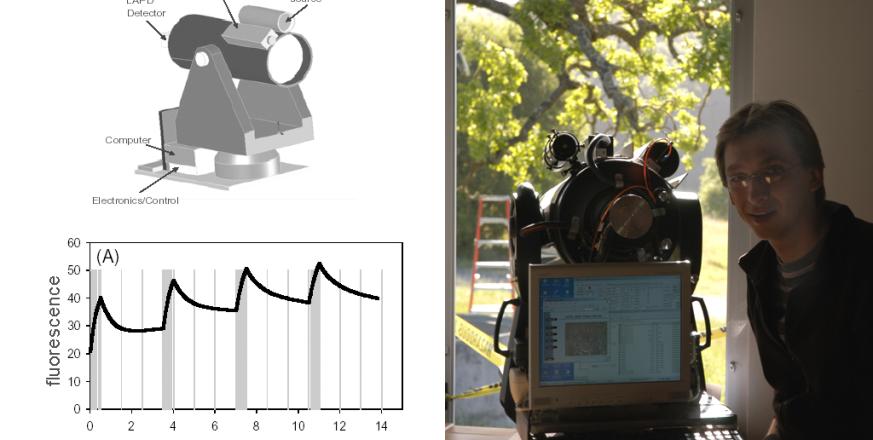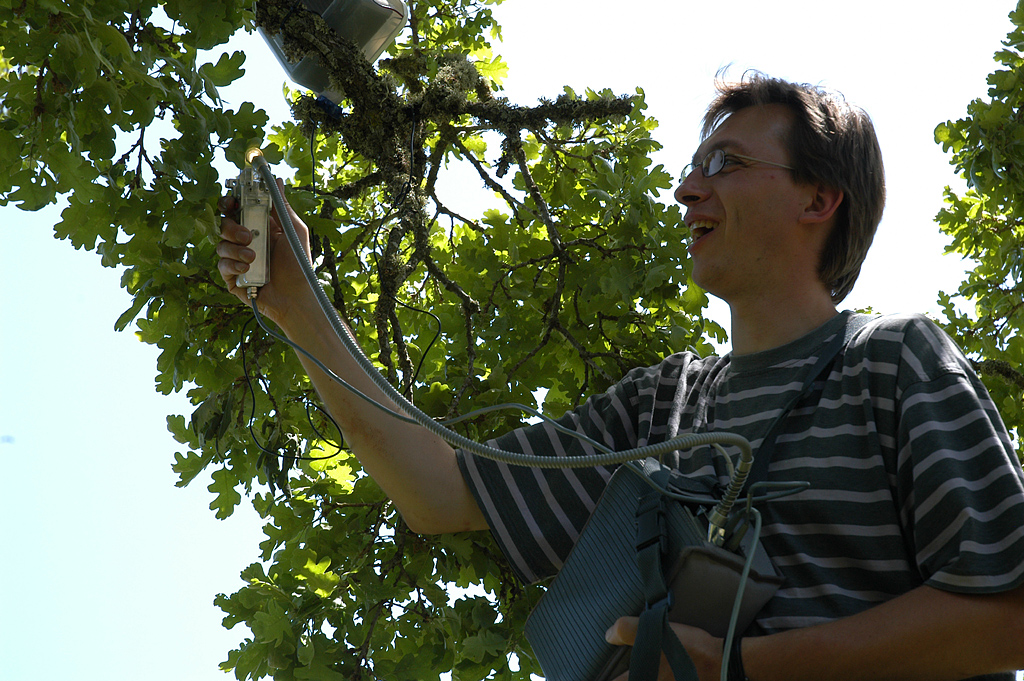Test application of the laser-induced fluorescence transient (LIFT) instrument

Summary
The photosynthetic machinery that enables plants to convert sunlight to chemical energy has two means of dissipating light energy that exceeds a leaf's needs: fluorescence, which is the instantaneous re-emission of light of another wavelength, and heat. Leaf fluorescence can also be actively stimulated with an external light source, and this has become a powerful technique for studying photosynthesis by individual leaves. A new experiment at the Sun field station is extending the approach to plant canopies by inducing fluorescence with an eye-safe laser.
The instrument looks out an east-facing window of the building and focuses a laser on nearby plants. As the laser strikes a clump of leaves, light energy is absorbed by the pigment chlorophyll, and the amount of fluorescence is determined by both the amount of light absorbed and the amount not used in photosynthesis or released as heat.
The laser is programmed to emit pulses of light in rapid succession, varied with pulses that are more spread out, and a detector continuously measures the amount of fluorescence by target leaves. The fluorescence pattern can be used to calculate the efficiency of photosystem II, the membrane protein complex that traps light energy to split water into oxygen, protons, and electrons. Fluorescence is highest during very rapid light pulses, when excitation power exceeds the capacity of electron transport by photosystem II, while less rapid pulses do not fully saturate electron transport (Fig. A).
The LIFT instrument is programmed to automatically rotate among targets, and the researchers will study several species during stress cycles and longer term seasonal changes. Lichens are expected to become photosynthetically active whenever dew, fog or rain wets them. The grasses should lose photosynthetic activity as plants flower and senesce. The leaves of the oak tree should increase in photosynthetic activity as the young leaves expand and become dark green.
Project Location (Sector 21)
 |  |  |  |  |  |  |  |  |
 |  |  |  |  |  |  |  |  |
 |  |  |  |  |  |  |  |  |
 |  |  |  |  |  |  |  |  |
 |  |  |  |  |  |  |  |  |
 |  |  |  |  |  |  |  |  |




